I have had a lot of fun exploring nightclothes from the past for the blog this year. And as always, I am a true lover of all things Victorian. As such, the topic of Victorian wrappers has been on my mind for some time.
I love that they mimic the shape of the popular dress styles of the time so much that they almost go unnoticed as robes or dressing gowns.
I am intrigued by the way that they often get confused as tea gowns.
I love how elegant and feminine they are.
I LOVE that they were reserved for private use, despite what you may hear online.
Wrappers are a bit misunderstood, and definitely misrepresented in fashion history. Let’s set the record straight and get bundled up for winter with information about this great piece of clothing from history.
What is a wrapper?
In short, a wrapper was an item of clothing made for wear in a woman’s private quarters, used mostly in the 19th century. It was worn over a woman’s clothing or underthings and thus intended to provide modesty and protection of one’s clothing while also maintaining the proper silhouette of the day.
A wrapper was used in a similar manner to how we use a robe or dressing gown today, sometimes fastened inside at the waist and then adjusted for size and comfort with a tie in the front. The major and obvious difference was that in addition to fastening inside the wrapper at the waist, many wrappers also included buttons to close the front of the bodice. The wonderful image below from RomanticHistory.com shows just how unique a garment it was and what it looked like before being tied:
While they are impressive to view today, Victorian wrappers were very simple garments compared to those they covered and compared to those worn at other times of the day. They were constructed using minimal pieces of fabric and as I mentioned, adjusted for size with a tie or drawstring and those not very tailored.
And yet, as we shall see, they were as elegant as we can imagine any other Victorian garment to be.
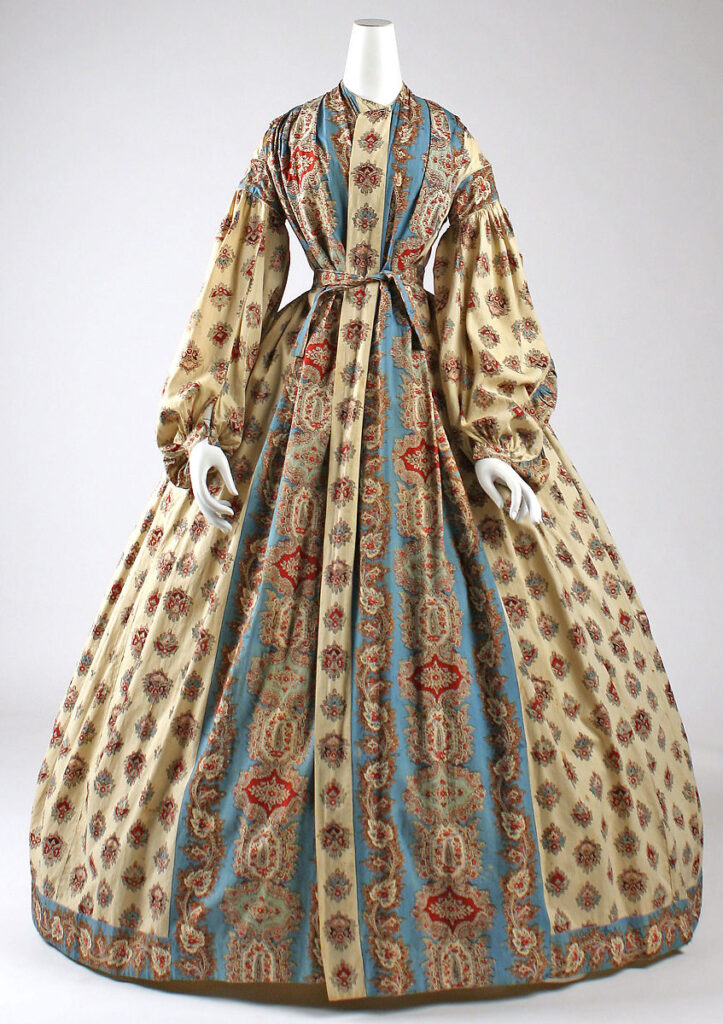
MetMuseum.com
Isn’t it just another type of tea gown?
For a long time, I felt confused over the differences between a tea gown and a wrapper because I saw so many bloggers discussing them together or even using them interchangeably. In fact, the two are completely different and not all that related.
As some readers will know, so-called tea-gowns grew in popularity in the late 1800s as an option for a dress a woman could wear around the house, as they were more loose-fitting and didn’t require the use of a corset. Women would often wear them to receive visitors or relax around the home before changing for dinner.
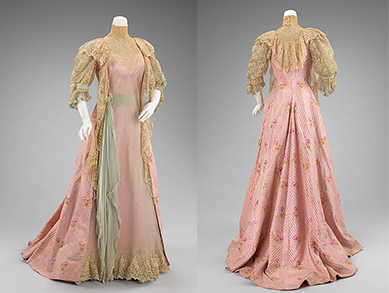
A wrapper, on the other hand, was never worn to receive visitors and was reserved for private use in one’s own room. Several passages from the etiquette manuals of the time clearly state this to be the case. The Art of Dressing Well: A Complete Guide to Economy, Style and Propriety from 1870 states:
“For breakfast in visiting, or at a public table, the loose dress of home would be out of place. A wrapper is suitable only for an invalid, or in the dressing room, and the breakfast dress should fit the waist closely, even if allowed to remain open in the skirt over a petticoat.”
It emphasizes this point again in a later chapter:
“Many ladies adopt the dressy wrapper as a dress for the reception of morning calls, wearing it often open over an elaborately tucked or embroidered petticoat, with embroidered slippers and breakfast cap. If such a dress is worn, it must be very handsome, or it will appear out of place. Strictly speaking, as we have said before, this dress is inappropriate excepting for the dressing-room, or for an invalid receiving callers in her own room. It may then be worn with perfect propriety.”
And The Ladies’ Book of Etiquette, Fashion and Manual of Politeness, published in 1876 describes that a wrapper worn in front of callers is only appropriate in emergencies:
“DRESS FOR MORNING VISITS–A lady should never receive her morning callers in a wrapper, unless they call at an unusually early hour, or some unexpected demand upon her time makes it impossible to change her dress after breakfast…A wrapper made with handsome trimming, open over a pretty white skirt, may be worn with propriety; but the simple dress worn for breakfast, or in the exercise of domestic duties, is not suitable for the parlor when receiving visits of ceremony in the morning.”
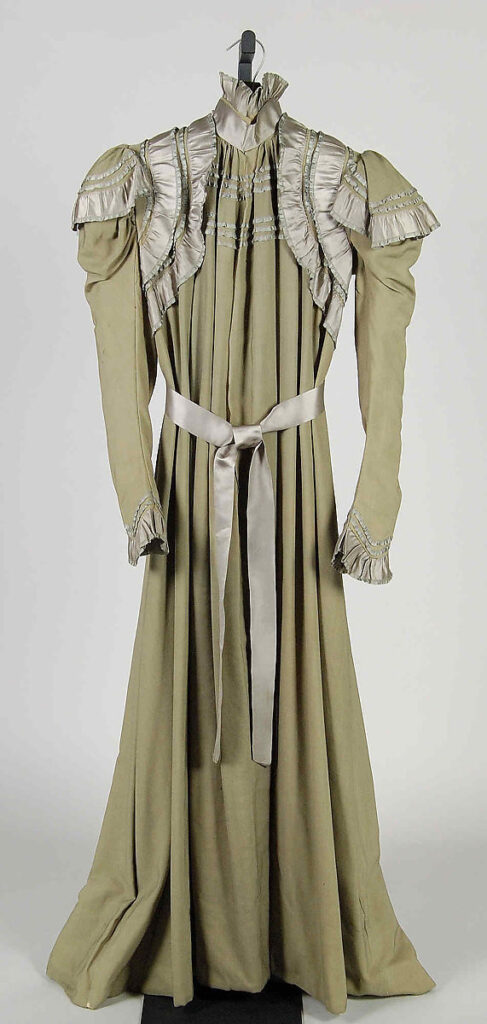
Image source: MetMuseum
A clue to the standards of the time
Wrappers are often forgotten from Victorian fashion because they followed the same silhouettes that were fashionable at the time. When displayed in a museum or viewed online they are easily mistaken for a dress or gown rather than a robe for this very reason.
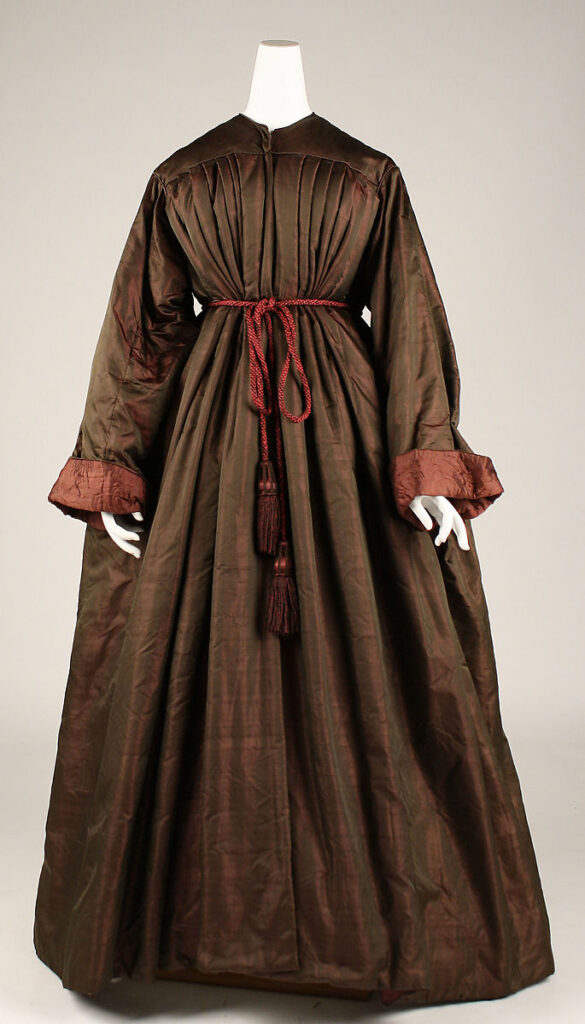
Image source: MetMuseum.com
That the cut of a wrapper was made to enforce the silhouette of choice and worn over clothing or underpinnings tell us two things about the Victorian era. First, it tells us how important it was for wealthy women to be presentable at all times, even at home and when alone. It also tells us just how important it was to these women to achieve the desired silhouette, as they embraced it even when no one was there to observe their efforts. It is hard to imagine they relaxed at all!
More about the elegance of Victorian fashion:
One hundred years of nightgowns: from the Victorian era to the 1950s
Victorian opera attire: a feast for the eyes

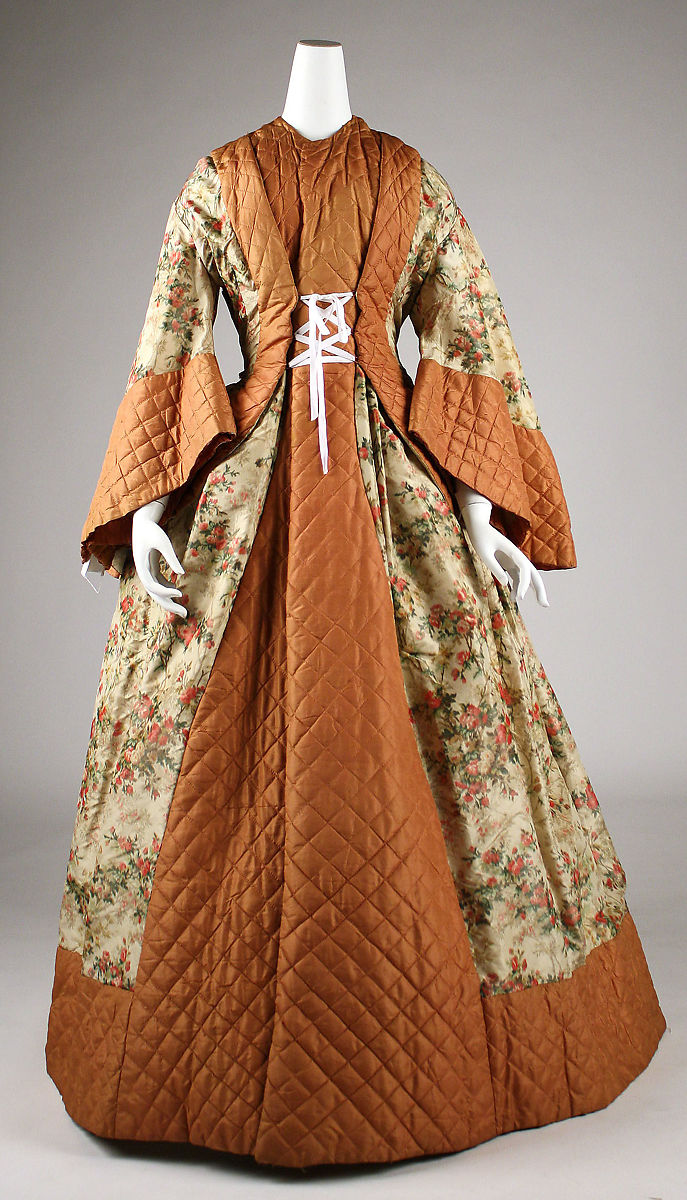
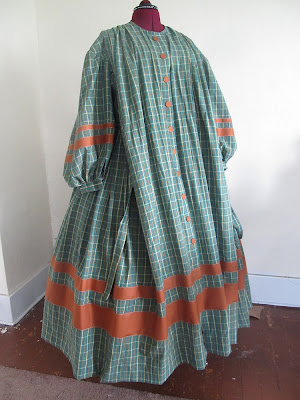
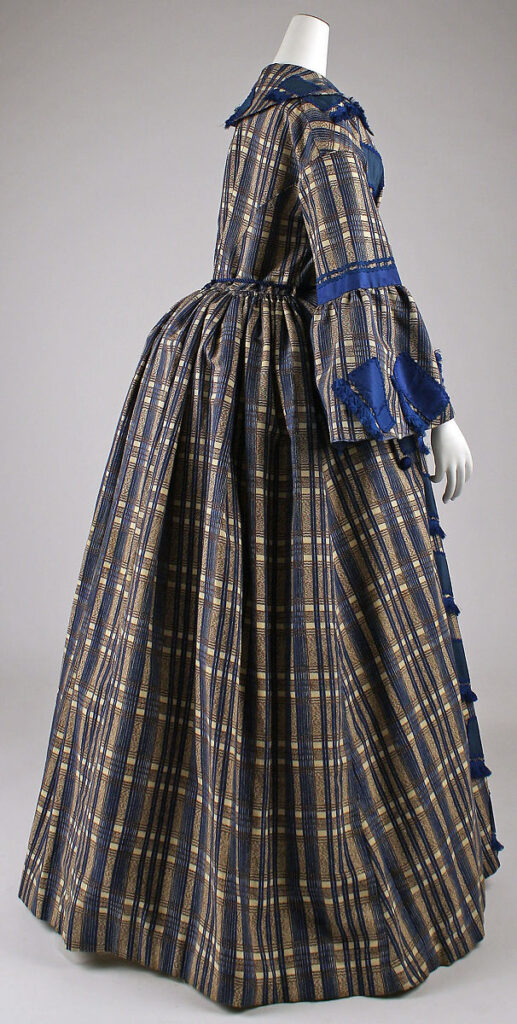












Yes, I think you are correct!!
The insistence that one absolutely must not receive guests in a wrapper makes me wonder if women were doing that- was this the era’s “leggings aren’t pants” argument?
I grew up reading period literature, and often wondered just what exactly a wrapper looked like, although I gathered from the context exactly how it was used. It’s lovely to see some of them!
I agree whole heartedly. I would certainly purchase one if your company made them.
May I make the suggestion that perhaps your start offering some wrappers to your customers? I’ve been considering making one for quite some time, but I’d love to have one ready made as well!